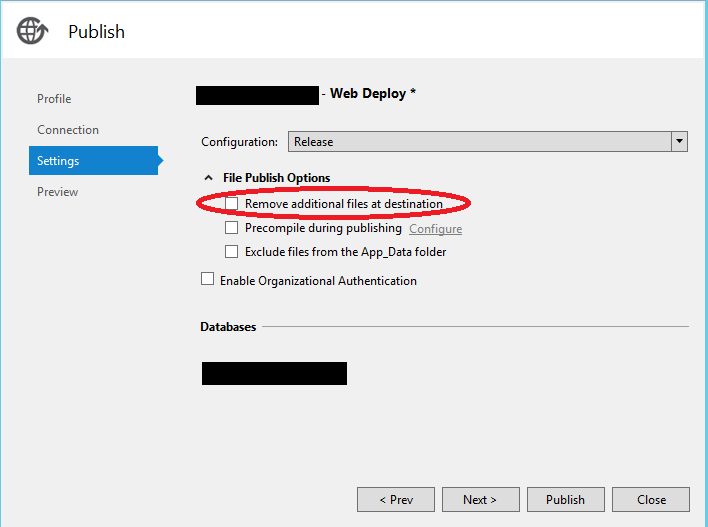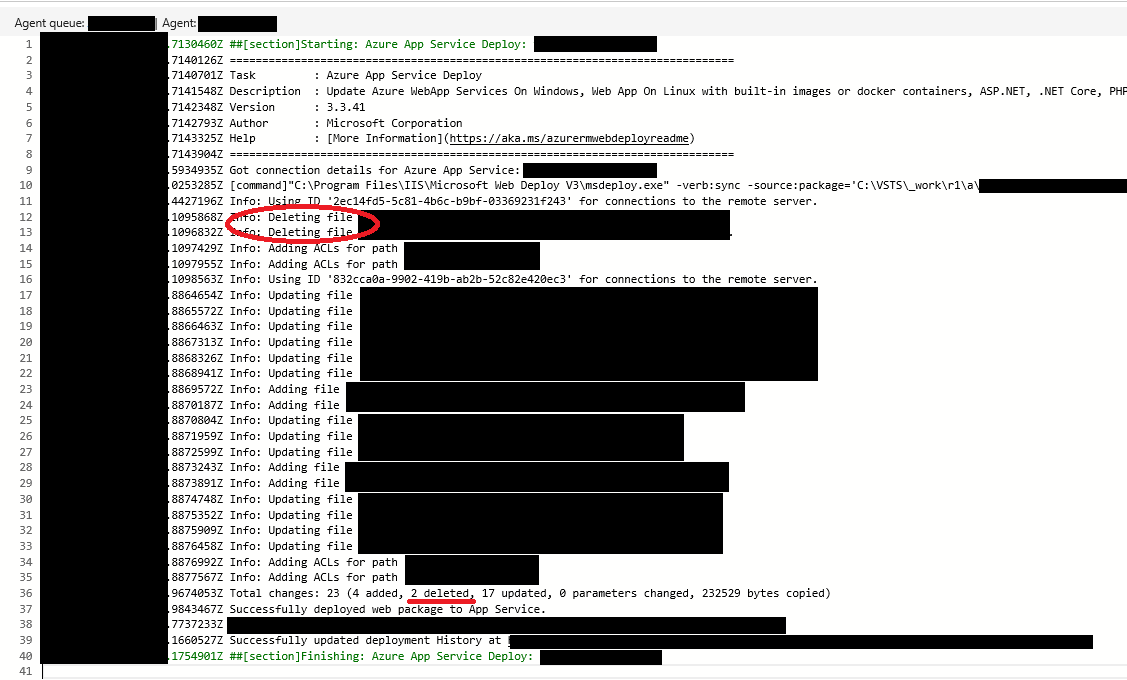When working with web applications and Azure App Service, it may sometimes be necessary to delete or remove files from a website. Whether it is a deprecated feature or a bit of development “junk” that was accidentally left on your website, these files can often introduce processing overhead or even security vulnerabilities if left unattended. It is, therefore, good practice to ensure that these are removed during a deployment. Fortunately, this is where tools such as Web Deploy really come into their element. When using this from within Visual Studio via the Publish dialog box, you can specify to remove any file that does not exist within your Project via the File Publish Options section on the Settings tab:
There is also the Exclude files from the App_Data folder setting, which has a bearing on how the above operates, but we’ll come back to that shortly…
Whilst this feature is useful if you deploying out to a dev/test environment manually from Visual Studio, it is less so if you have implemented an automated release strategy via a tool such as Visual Studio Team Services (the cloud version of Team Foundation Services). This is where all steps as part of a deployment are programmatically defined and then re-used whenever a new release to an environment needs to be performed. Typically, this may involve some coding as part of a PowerShell script or similar, but what makes Team Services really effective is the ability to “drag and drop” common deployment actions that cover most release scenarios. Case in point - a specific task is provided out of the box to handle deployments to Azure App Service:
What’s even better is the fact that we have the same option at our disposal à la Visual Studio - although you would be forgiven for overlooking it given how neatly the settings are tucked away 🙂
Note that you have to specifically enable the option to Publish using Web Deploy for the Remove additional files at destination option to appear. It’s important, therefore, that you fully understand how Web Deploy works in comparison to other options, such as FTP deploy. I will think you will find, though, that the list of benefits far outweighs any negatives. In fact, the only drawback of using this option is that you must be using Microsoft “approved” tools, such as Visual Studio, to facilitate.
We saw earlier in this post the option for Exclude files from the App_Data folder setting. Typically, you may be using this folder as some form of local file store for configuration data or similar. It is also the location where any WebJobs configured for your website would be stored. With the Exclude files from the App_Data folder setting enabled, you may assume that Web Deploy will indiscriminately delete all files residing within the App_Data directory. Luckily, the automated task instead throws an error if it detects any files within the directory that may be affected by the delete operation:
Helpful in the sense that the task is not deleting files which could be potentially important, frustrating in that the deployment will not complete successfully! As you may have already guessed, enabling the Exclude files from the App_Data folder setting in Visual Studio/on the Team Services task gets around this issue:
You can then sit back and verify as part of the Team Services Logs that any file not in your source project is deleted successfully during deployment:
Manual deployments to Production systems can be fraught with countless hidden dangers - the potential for an accidental action chief among them, but also the risk of outdated components of a system not being flagged up and removed as part of a release cycle. Automating deployments go a long way in taking human error out of this equation and, with the inclusion of this handy feature to remove files not within your source code during the deployment, also negates the need for any manual intervention after a deployment to rectify any potential issues. If you are still toying with introducing fully automated deployments within your environment, then I would urge wholeheartedly to commit the effort towards achieving this outcome. Get in touch if you need any help with this, and I would be happy to lend some assistance 🙂






